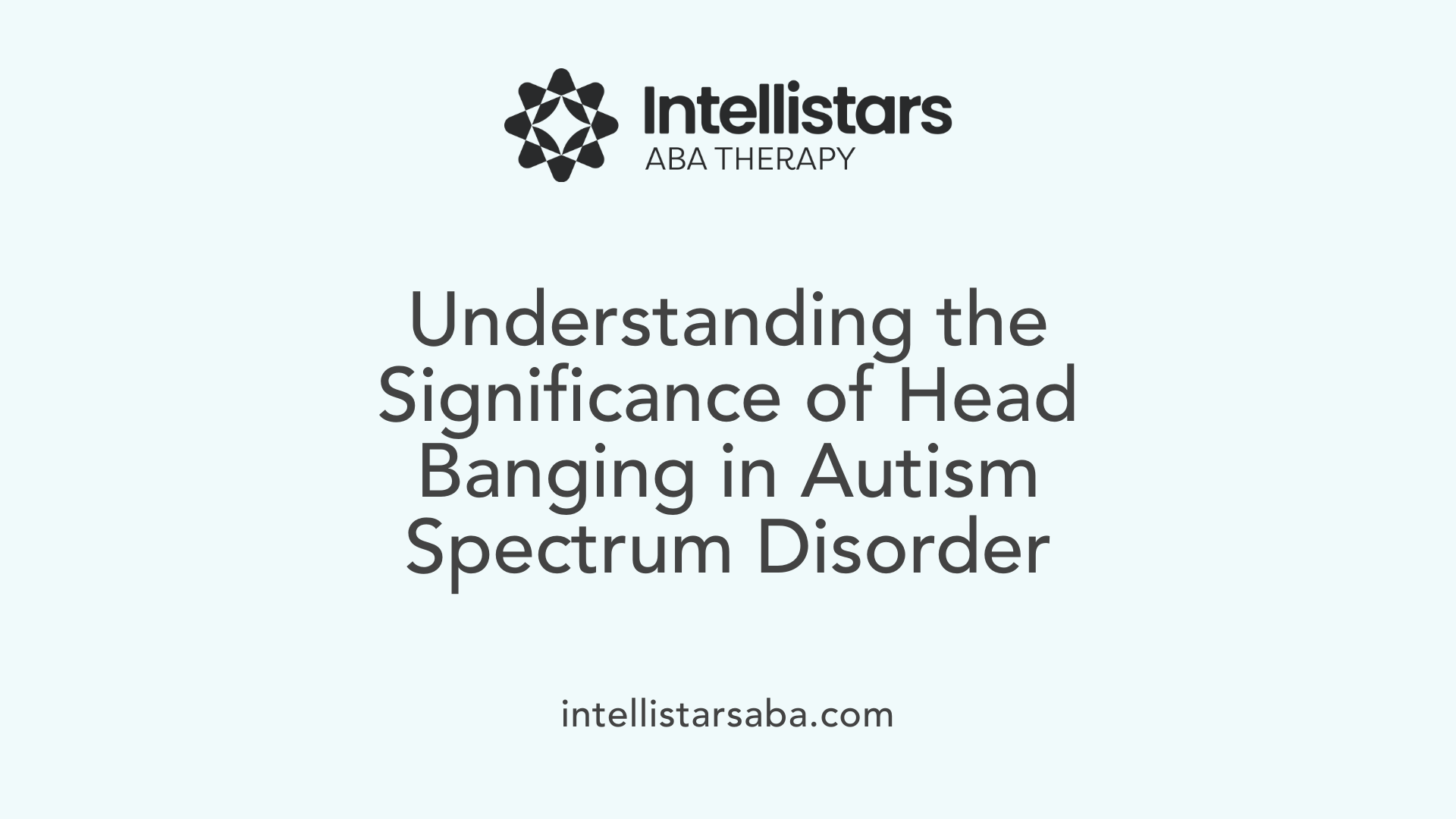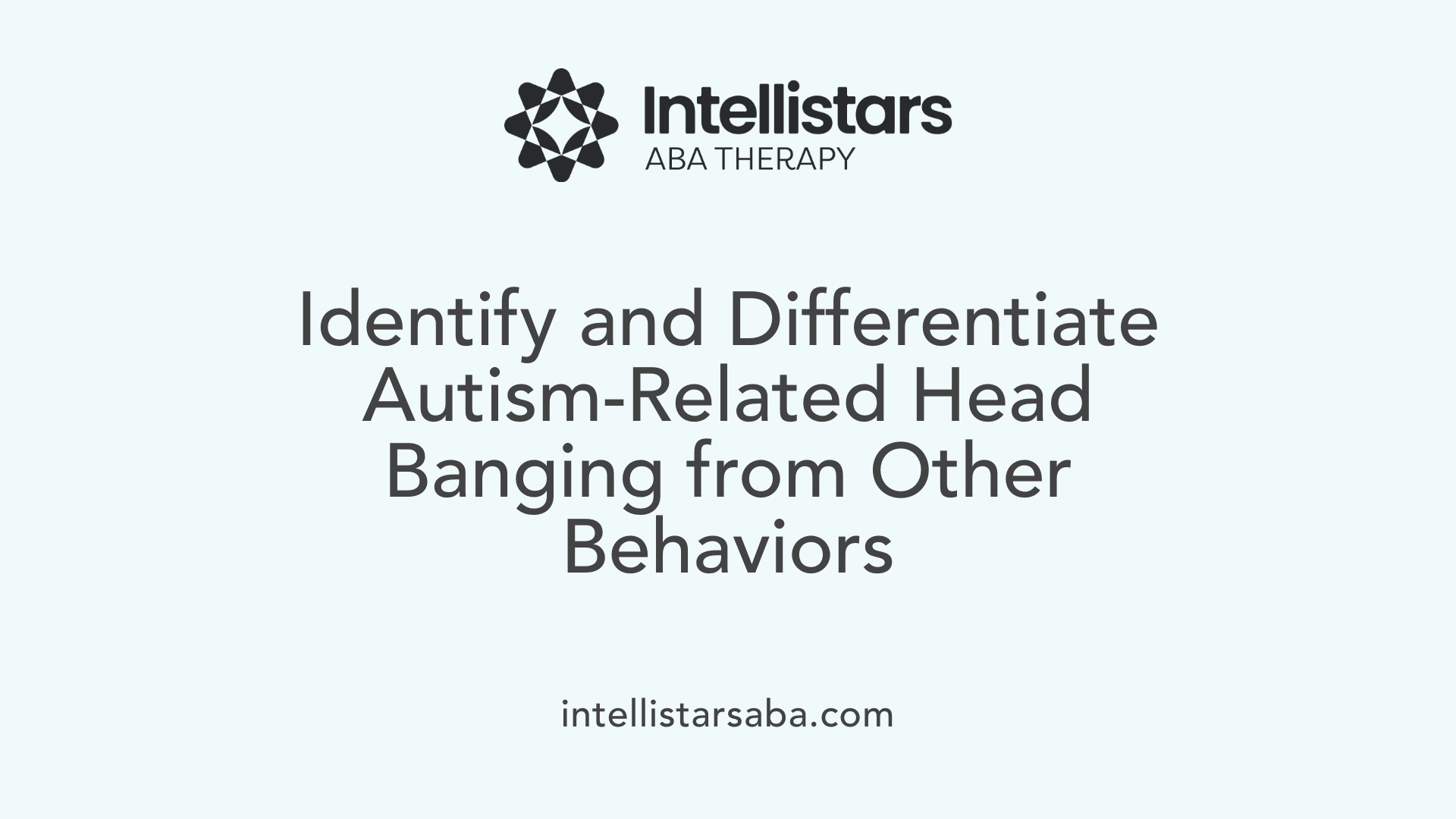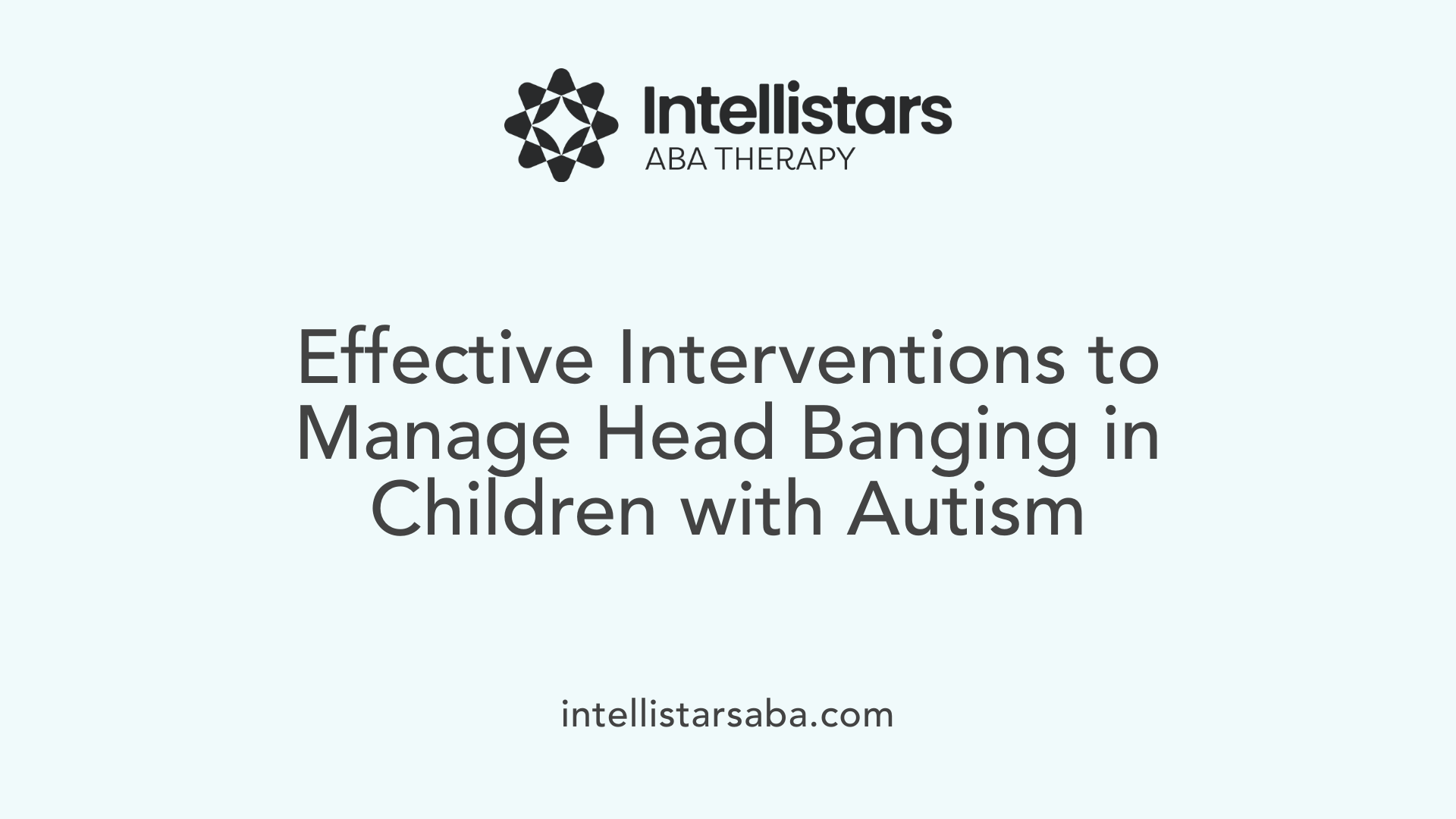A Comprehensive Guide to Head Banging in Autism
Head banging is a common but complex behavior observed in children with autism spectrum disorder (ASD). While often perceived as merely a problematic behavior, it serves various functions related to sensory processing, communication, and emotional regulation. Understanding its causes, development, and management strategies is crucial for caregivers, educators, and health professionals to support affected children effectively. This article explores the developmental factors, causes, and interventions related to head banging in autism, providing insights that aim to promote safety, reduce distress, and improve quality of life.
Developmental Factors Associated with Head Banging in Children with Autism
What developmental factors are associated with head banging in children with autism?
Children with autism often exhibit head banging as a response to various developmental challenges. Sensory processing issues play a significant role, as kids may bang their heads to either seek stimulation when under-stimulated or to help manage overload from sensory input. This rhythmic behavior can serve as a calming mechanism or a way to regulate sensory systems.
Communication difficulties are another key factor. When children cannot express their needs verbally, they might resort to head banging as an alternative form of communication. It can signal frustration, discomfort, or a request for attention.
Emotional regulation is often complex in children with autism. Head banging may be a way to vent feelings of anxiety, anger, or frustration, especially during emotionally intense situations or transitions.
Age also influences the frequency and intensity of head banging. Typically, this behavior peaks in early childhood and may increase around times of stress or change. As children grow older, persistent head banging could signify underlying issues requiring further assessment.
Certain triggers are common in exacerbating head banging. Changes in routine, physical discomfort like pain from ear infections or headaches, and sensory overload from noise or visual stimuli can lead to an increase in head-banging episodes.
To address these behaviors, interventions such as Functional Communication Training and behavioral therapies can help identify the roots of the head banging. These strategies focus on teaching children alternative ways to communicate and self-regulate, reducing the need for such behaviors while supporting their developmental needs.
Is Head Banging a Sign of Autism?

How Common Is Head Banging Among Young Children and Infants?
Head banging is quite common in infants and toddlers, especially those with autism spectrum disorder (ASD). Studies indicate that up to 20% of healthy babies and a larger proportion of children with developmental delays or autism engage in head banging early in life. Typically, this rhythmic behavior begins after six months of age and often peaks around age two or three. For many children, head banging serves as a self-soothing technique or a way to regulate sensory input.
What Are the Functions of Head Banging, Such as Self-Soothing and Communication?
Children may head bang for various reasons. It can act as a calming habit, especially in response to sensory under-stimulation or overload. For some, it offers a release of endorphins that temporarily relieve pain or discomfort, such as from ear infections. Children may also bang their heads to express frustration or to attract attention, especially when they lack effective communication skills. In children with autism, head banging often serves as a way to manage emotional distress, sensory issues, or pain.
Why Is Age an Important Consideration, Especially Beyond Three Years?
While head banging is common in very young children, persistent head banging after age three or beyond might signal underlying challenges needing evaluation. If the behavior continues past this age, it could indicate ongoing sensory processing issues, emotional difficulties, or medical problems like pain or discomfort. It’s important for caregivers to monitor whether the behavior persists and consult professionals if necessary to ensure safety and appropriate support.
How Does Head Banging Differ from Typical Development?
In typical development, head banging usually diminishes as children grow older and develop more advanced communication skills. Most children outgrow the behavior by age four. However, in children with autism or other developmental delays, head banging may persist longer and be more intense. Such behaviors are often linked to sensory processing difficulties, communication barriers, or emotional regulation challenges.
Why Is It Important to Understand Triggers?
Identifying what triggers head banging is crucial for effective intervention. Common triggers include sensory overload or under-stimulation, physical pain, frustration, or attempts at communication. Recognizing these factors allows caregivers and therapists to address the root causes, teach alternative behaviors, and create safer environments. Interventions might include sensory strategies, behavioral assessments, and protective measures like helmets. Overall, understanding triggers helps manage the behavior and support the child's well-being.
Causes of Head Banging in Children with Autism
What causes head banging in children with autism?
Head banging is a common behavior among children with autism and often serves multiple functions. One main reason is self-soothing; children may head bang to calm themselves during times of stress or overwhelm. It can be a way to cope with feelings of frustration, anxiety, or sensory overload.
Additionally, head banging is sometimes used as a form of communication. For children who are nonverbal or have limited verbal skills, this behavior may express needs or emotions they cannot put into words.
Sensory processing issues are also a significant cause. Some children head bang to either seek sensory stimulation when under-stimulated or to reduce sensory input when overloaded. For example, rhythmic head banging can activate the vestibular system, providing a calming or alerting sensation.
Physical discomforts, such as pain from headaches, ear infections, or other ailments, can trigger head banging. If the behavior persists or intensifies, medical evaluation is recommended to rule out underlying health issues.
Understanding these underlying causes can help caregivers and professionals develop effective responses. Whether it's providing sensory alternatives, addressing medical concerns, or teaching communication methods, recognizing the function of head banging is essential. Interventions might include sensory strategies, behavioral assessments, and positive reinforcement to promote safer and more adaptive ways for children to meet their needs.
Distinguishing Autism-Related Head Banging from Other Behaviors

How can we distinguish head banging related to autism from other self-injurious behaviors or conditions?
Identifying whether head banging is connected to autism involves looking at several developmental and behavioral factors.
Children with autism often exhibit specific features such as a lack of pointing, weak eye contact, limited pretend play, and difficulty following gaze. When they engage in head banging, these signs may be present without typical social behaviors.
The behavior is usually repetitive and occurs in particular contexts, like during routines, sensory overload, or when expressing frustration. Unlike other self-injurious behaviors, autism-related head banging often serves as a way for children to self-soothe, communicate their needs, or regulate sensory input.
It's also important to rule out medical causes such as pain, ear infections, or headaches that could independently cause head banging. When medical issues are excluded, and the behavior aligns with developmental delays and communication challenges, a stronger link to autism can be inferred.
Furthermore, children with autism may not respond to social cues or attempts at redirection like typically developing children might. The behavior tends to be consistent with their developmental profile.
In summary, distinguishing autism-related head banging from other behaviors involves a comprehensive assessment of developmental features, understanding the context of the behavior, and ruling out medical causes. A thorough functional behavioral assessment can help determine the behavior's purpose and guide effective intervention.
Self-Injurious Behaviors in Autism and How to Prevent Them Safely
What self-injurious behaviors are associated with autism, and how can they be prevented safely?
Self-injurious behaviors (SIB) in autism encompass a range of actions that cause physical harm or distress, such as head banging, skin picking, hair pulling, biting, scratching, and eye gouging. These behaviors often serve functions like communication, self-regulation of emotions, or seeking sensory input when they cannot be expressed verbally.
To prevent and manage SIB safely, professionals and caregivers rely on comprehensive assessments like Functional Behavior Assessments (FBAs). These assessments help identify the specific triggers and reasons behind each individual's behavior, guiding tailored intervention strategies.
Prevention strategies include improving communication skills through alternative methods such as visual supports or augmentative communication devices. Providing sensory alternatives like vibrating toys or sensory integration tools can help meet sensory needs without resorting to harmful actions.
Positive reinforcement is vital—praising and rewarding appropriate behaviors encourages adaptive responses. Additionally, minimizing environmental triggers, creating predictable routines, and reducing sources of discomfort help lower the incidence of self-injury.
When incidents occur, responding calmly and promptly is crucial. Removing physical discomforts—like treating pain from ear infections or headaches—and redirecting attention toward safer activities can prevent escalation. Implementing safety measures, such as padded areas or protective helmets, can safeguard children during episodes.
Effective intervention often involves behavioral therapies like Applied Behavior Analysis (ABA) and Functional Communication Training (FCT). These techniques teach alternative communication and self-regulation skills.
In some cases, medications like risperidone or aripiprazole are prescribed under medical supervision to reduce severity or frequency of SIB, especially when other strategies are insufficient.
Creating a supportive environment that addresses medical, emotional, and sensory needs, combined with behavioral interventions, helps reduce the occurrence and impact of self-injury, promoting safer and healthier development for children with autism.
Management and Intervention Strategies for Head Banging in Autism

How can head banging be managed and addressed in children with autism?
Managing head banging behavior in children with autism requires a comprehensive approach focused on understanding its root causes and implementing appropriate interventions.
First, conducting a functional behavioral assessment (FBA) is crucial. This assessment helps identify what triggers head banging, such as sensory overload, sensory under-stimulation, pain, or communication difficulties. Observing the child's behavior in different situations provides valuable insights into the specific functions of head banging.
Once triggers are identified, caregivers and professionals can teach alternative, safer ways for children to meet their sensory or communication needs. For example, using communication devices or visual supports can help children express their needs more effectively. Providing sensory tools like vibrating objects, chewable toys, or weighted blankets can also serve as sensory alternatives.
Creating a safe environment is vital. Padding around furniture, using protective helmets, and removing sharp or dangerous objects can prevent injuries during head banging episodes. Installing cushioned headboards or soft flooring in play areas can also reduce the risk.
Supporting self-regulation through calming techniques and routines can decrease the frequency of head banging. Teaching children self-soothing strategies, such as deep breathing or sensory breaks, helps them manage their emotions and sensory experiences.
Finally, engaging professional support from behavioral therapists, occupational therapists, and speech-language pathologists is essential. These specialists can develop personalized intervention plans, train caregivers on effective response techniques, and support the child’s overall development.
Consistent, calm, and low-pressure responses from caregivers, combined with positive reinforcement for alternative behaviors, can significantly reduce head banging. Addressing underlying causes and providing appropriate supports not only minimizes injuries but also enhances the child's emotional and sensory regulation capacity.
Resources and Strategies for Caregivers

Understanding head banging as a self-stimulatory behavior
Head banging is a common activity among children with autism and often serves as a form of self-soothing or sensory regulation. It can be a response to sensory overload or under-stimulation, pain, or emotional distress. Recognizing this behavior as part of a child's attempt to manage their sensory or emotional needs can help caregivers respond more effectively.
Using reinforcement, routine, and sensory activities for management
Implementing positive reinforcement for alternative behaviors encourages children to express themselves in safer ways. Establishing predictable routines provides stability that reduces anxiety and the likelihood of head banging. Incorporating sensory activities—such as swinging, bouncing, or vibration tools—can fulfill sensory needs safely, reducing the urge to head bang. Protective measures like helmets and padding can help prevent injuries if head banging occurs.
Seeking educational resources, webinars, and support groups
Caregivers can deepen their understanding by accessing various educational materials, online webinars, and support groups. Many organizations, including the Caregiver Action Network and local community centers, offer training sessions and resources tailored for managing self-injurious behaviors like head banging. Joining support groups enables caregivers to share experiences, gain advice, and find emotional support.
Practicing self-care and stress management for caregivers
Supporting a child with autism can be challenging and emotionally taxing. Prioritizing self-care is essential. Techniques like mindfulness, regular breaks, and seeking social support help caregivers maintain their well-being. Managing stress effectively improves their capacity to implement strategies consistently and empathetically.
Consulting health professionals for tailored interventions
Professional guidance from pediatricians, behavioral therapists, and occupational therapists is vital. These experts can conduct assessments, recommend specific interventions such as Behavior Analysis (ABA), sensory integration therapy, or communication support. Developing an individualized plan ensures that strategies address the child's unique triggers and needs.
| Strategy | Description | Resources |
|---|---|---|
| Behavioral Interventions | Use positive reinforcement and functional behavioral assessments to address head banging. | Behavior analysts, therapists |
| Sensory Activities | Incorporate safe sensory tools like vibrating objects or swings to satisfy sensory needs. | Occupational therapists, sensory gyms |
| Education & Support | Attend webinars, join support groups, and read educational materials to stay informed. | Caregiver organizations, online forums |
| Self-care | Practice stress management techniques and ensure personal well-being. | Mindfulness apps, community support programs |
In summary, managing head banging in children with autism involves understanding the behavior, using positive and sensory-based strategies, accessing educational resources, taking care of oneself, and seeking professional help. This comprehensive approach helps promote safety, emotional regulation, and overall well-being for both the child and caregiver.
Empowering Support Through Knowledge and Action
Head banging in children with autism is a multifaceted behavior rooted in sensory, emotional, and communicative functions. While common, it can pose safety concerns and emotional stress for both children and caregivers. Through understanding its developmental origins, causes, and functions, caregivers and professionals can implement targeted interventions that promote safety, reduce distress, and foster more adaptive behaviors. Approaches like functional behavioral assessments, sensory strategies, communication training, and safety precautions make a significant difference. Empowered with knowledge and resources, caregivers can support children in developing healthier coping mechanisms and improve their overall well-being, turning challenging behaviors into opportunities for growth and connection.
References
- Autism, Head Banging and other Self Harming Behavior
- Self-injurious behaviour - a guide for all audiences
- Head banging: Why it happens and what to do about it?
- Causes and Interventions for Self-Injury in Autism
- Autism Head Banging: Tips and Effective Solutions
- Head Banging in Autism: Causes, Effects, and Interventions
- Self-Injury in Autism Spectrum Disorder and Intellectual ...
- Baby Head Banging & Autism






